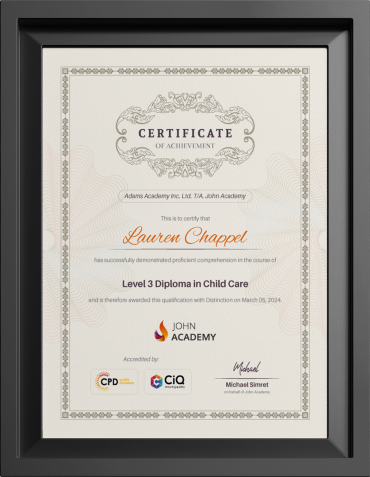
Remember when teaching meant classrooms and chalkboards? Today it’s often screens and software. But the goal remains the same: keep students engaged and learning.
Educators who have made the switch to online teaching are using specialized techniques and content to keep learners engaged and help them truly understand the material.
In this article, we’ll share five proven instructional design tools for creating great eLearning content. These tools, some of which you can explore further in Instructional Design Software Tools guide, will enhance your online lessons and help keep your learners focused.
We’ll also show you how to create your first online course. Whether you’re a tech pro or a digital newbie, you’ll learn how to pick the right tool, create content, add interactivity, and measure the results.
What Is Instructional Design?
Instructional design is the process of creating great learning experiences by designing educational content and activities. For teachers moving to online teaching, it’s about adapting traditional teaching methods to digital platforms to make virtual learning efficient and effective.
The Key ID Principles
When designing courses, instructional designers follow principles to create learning that drives real results. These principles turn education into action so lessons don’t just inform but transform.
- Learner-centered material. Online education caters to different learning styles. It offers multiple pathways, such as video lectures, reading materials, and interactive quizzes, so students can engage with content in ways that work for them. This way, each learner can access, and absorb information.
- Clear objectives. Just as you would write lesson goals on a whiteboard, clearly state what learners will achieve by the end of each online module. This clarity helps students focus and stay motivated.
- Engaging content. Visuals and interactivity can make or break online lessons. Instructional designers add infographics, short videos, and gamified activities to capture learners’ attention and retention of information.
- Continuous assessment. In a physical classroom, you can gauge understanding through facial expressions and body language. Online, it’s important to include regular check-ins through quizzes, discussion forums, or interactive activities to make sure students are keeping up.
- Active learning. Give students plenty of opportunities to apply what they’ve learned. This could be online simulations, virtual group projects, or real-world problem-solving tasks that students can do on their own.
- Feedback and adaptation. Instructional design grows with feedback from learners and course data, making the content clearer and more engaging.
Why Modern Teachers Need Instructional Design Software
You may be wondering if you really need another tech tool for teaching, but instructional design software isn’t just another passing trend. It offers significant benefits that can transform your online teaching experience:
Increased student engagement. These tools help you create interactive lessons that grab students’ attention. Well-designed digital content can increase student interest and participation.
Streamlined lesson creation. The software has vast libraries of pre-built elements like course templates, multimedia resources, and slide designs. You won’t have to spend hours searching the internet for materials anymore. You can focus on customizing these high-quality elements, increase your productivity, and improve your content.
Enhanced knowledge retention. Instructional design tools help you create lessons that help learners retain more information. By offering multiple learning paths and interactive elements, you can create content that suits different learning styles and makes your content more memorable.
Adaptive learning. Many instructional design tools have branching scenarios so you can build content that adjusts to student performance. For example, in quizzes, correct answers can lead to harder questions and incorrect answers to more explanations. This personalizes the experience so each student gets content that meets their needs.
Data-driven insights. Many of these tools have built-in analytics that provide valuable insights into how your students are performing and their engagement level. This data allows you to spot where students are struggling, so you can adjust your teaching and offer targeted support proactively.
LMS integration. Most instructional design software integrates with popular learning management systems (LMS). These platforms allow you to deliver your eLearning content online and track learner progress.
Learner-centred material. Online education, facilitated through LMS software, caters to different learning styles and organisational needs. A learning management system offers multiple pathways, such as video lectures, reading materials, and interactive quizzes, so students can engage with content in ways that work for them. This approach allows each learner to access and absorb information effectively, whether in a corporate setting, educational institution, or any organisation needing tailored learning experiences.
Starting with Instructional Design Software: 5 Tools to Try
To get you started we’ve put together a list of 5 instructional design tools. In the next section we’ll give you an overview of each, including their pros and cons. This will help you make an informed decision based on your needs and situation.
Tool | What it does | Strong points | Weak points | Free Version/Trial Period |
iSpring Suite | Lets you create comprehensive online courses in a familiar PowerPoint environment | It offers lots of advanced capabilities with a highly intuitive interface | Requires MS PowerPoint | 14-day free trial |
Articulate Storyline | Lets you create interactive online courses | It’s pretty easy to use and has lots of features | Some users find it expensive | 30-day free trial |
Adobe Captivate | Great for making software simulations and complex courses | It has powerful features for advanced users | Steep learning curve | 30-day free trial |
Camtasia | Mainly for making video lessons | It’s easy to learn and great for screen recordings | It’s not the best option for building versatile eLearning content | 30-day free trial |
H5P | Lets you create interactive content for websites | It’s free and works in web browsers | It doesn’t have as many features as paid tools | Free |
When exploring instructional design software, picking the right tool is important. Keep these factors in mind as youdecide:
- Ease of use: Look for software with a simple interface and a short learning curve.
- Functionality: Does the tool have the features you need for your teaching?
- Cost: What’s your budget?
- Compatibility: Does it integrate with your school’s existing systems?
Get Started: A Step-by-Step Guide To Create Your First Online Lesson
Let’s get started on creating your very first online lesson. We’ll break it down into simple steps.
Step 1: Do Some Preparation Work
- Define your learning objectives. What should learners know or be able to do by the end of the lesson? Make goals specific, measurable, achievable, relevant, and time-bound (SMART), so both you and the students know where they are headed.
- Know your audience. Consider their age, background, and prior knowledge. Understanding your audience helps you adjust the content, examples, and activities to fit their needs, making learning more compelling and easier to retain.
Step 2: Plan Your Lesson
- Outline your lesson. Divide the content into logical sections or modules. Use clear and simple language that your audience will easily understand.
- Plan multimedia elements. Decide where to incorporate images, videos, or audio clips to keep learners interested.
- Sketch out visual concepts. Consider adding infographics or diagrams that can help explain complex topics in a more digestible way.
- Design assessment strategy. Plan a list of question types to test understanding at key points. This will help you measure how well students absorb the material.
- Consider interactivity. Brainstorm ideas for engaging activities or exercises within the lesson. This can make the learning experience more dynamic and fun for your students.
Step 3: Build Your Lesson
- Use your chosen software to put it all together.
- Add your content and interactive elements. This could be clickable hotspots on images, drag-and-drop exercises, interactive quizzes, or branching scenarios
- Apply design consistency for a professional look.
- Consider incorporating accessibility features like alt text for images and captions for videos. This keeps your content inclusive and accessible to all learners.
Step 4: Test and Refine
- Self-review. Try the lesson out yourself. Complete all activities and assessments to identify any unclear instructions, technical issues, or pacing problems so your lesson makes sense to the learner.
- Peer review. Get feedback from colleagues on content and usability.
- Learner testing. If possible, get a small group of your target audience to try the lesson.
- Make changes as needed. Use insights from these methods to improve the learning experience and address any issues.
Remember, your first project doesn’t need to be perfect. Just apply what you’ve learned about instructional design and familiarize yourself with the software. Each lesson you create will build your skills and confidence.
Current Trends in Instructional Design
As technology moves forward, so does instructional design. Sal Khan, founder of Khan Academy, says, “The future of teaching isn’t about computers replacing teachers. It’s about giving teachers powerful tools to supercharge each student’s learning experience.”
Let’s look at some of the trends:
- Adaptive learning technologies: Our phones predict what we are going to text. Adaptive learning platforms can now do the same with content. These smart systems learn and adapt to each learner’s progress for more personalized learning. These features aren’t as sophisticated as predictive text yet, but their potential is massive.
- Immersive learning environments: Virtual reality (VR) and augmented reality (AR) have already changed education. Learners can explore ancient Rome as if they’re really there, or journey inside a cell at a microscopic level. These immersive experiences make abstract concepts more concrete and engaging, bringing learning to life.
- Microlearning: This breaks topics into short, standalone units typically consumed in about five minutes. This approach improves retention and allows learners to build skills efficiently, making it popular in corporate environments.
Closing note
In this article, we’ve looked at how instructional design software can support your online teaching. Start with a simple tool and good teaching practices. Experiment, learn from your mistakes, and stay up to date. Remember, you’re the key to great teaching — the software just enhances your expertise. Try a simple lesson and see how it works for your students. Your instructional design journey starts now!

